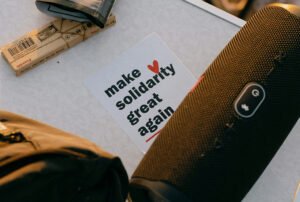February 13, 2017; Roll Call
In the early days of the Obama administration, members of Congress found themselves challenged by crowds of Tea Party members concerned about the direction they feared the country was about to head. Just weeks ago, millions of Americans took to streets across the nation to voice their concerns about the policies of another new administration. Since then, street protests, confrontational town hall meetings, and active calling campaigns have become almost daily events. These efforts make great video and are easy to tweet, but they are really effective? When legislators get down to casting their votes, do the voices of their constituents really get heard?
A newly released study by Congressional Management Foundation, “Citizen-Centric Advocacy: The Untapped Power of Constituent Engagement,” suggests that confrontation might feel good but may not be the best way forward if effecting policy is the goal. Rather “citizens who show up in person and are well-prepared with facts and arguments can have a sizable impact on undecided legislators.”
The report, based on data collected through surveys of Congressional staff conducted between 2004 and 2015, challenges the effectiveness of a highly confrontational style of protest and recommends a more fact- and relationship-based effort:
- Direct constituent interactions have more influence on lawmakers’ decisions than other advocacy strategies. In three surveys of congressional staff over a 10-year span, 99 percent (2004), 97 percent (2010), and 94 percent (2015) said that “in-person visits from constituents” would have “some” or “a lot” of influence on an undecided lawmaker.
- Congress places a high value on groups and citizens who have built relationships with the legislator and staff. When asked what advocacy groups should do more of to build relationships with the office, 79 percent of staff surveyed said “meet or get to know the Legislative Assistant with jurisdiction over their issue area” and 62 percent said “meet or get to know the District/State Director.”
- Citizen advocates are more influential and contribute to better public policy when they provide personalized and local information to Congress. 9 out of 10 (91 percent) congressional staffers surveyed said it would be helpful to have “information about the impact the bill/issue would have on the district or state.” However, only nine percent report they receive that information frequently. Similarly, 79 percent said a personal story from a constituent related to the bill or issue would be helpful, but only 18 percent report they receive it frequently.
Bradford Fitch, president and CEO of CMF, told Roll Call that phone calls and emails are not necessarily the most effective ways of communicating with legislators—and neither is confrontation. “When you’re yelling, Congress isn’t listening,” he said.
To have a productive meeting with lawmakers and staff, the CMF report noted the benefits of coming prepared. “What we’ll have to see are specific proposals that members of Congress will have to make choices on and that citizens can hold legislators accountable on….That, all of our research shows, is another component of great advocacy—that there is a specific ask.”
Sign up for our free newsletters
Subscribe to NPQ's newsletters to have our top stories delivered directly to your inbox.
By signing up, you agree to our privacy policy and terms of use, and to receive messages from NPQ and our partners.
Sounds logical. But it is the logic of a more normal time, a time that may have been banished to history and nostalgia. It misses the difficulty that those who feel most alienated and powerless have in just getting in the door to have a calm, rational conversation. It misses the growing power of money in our political system. Donors and paid lobbyists have a level of access that most citizens do not. They have a capacity to present their facts, figures, and policy recommendations that most citizens struggle to achieve.
The Tea Party’s effective strategy was not the one recommended by CMF’s study. According to former Congressional staff members Ezra Levin, Leah Greenberg, and Angel Padilla, “they just showed up on their own home turf, and they just said no.”
It worked. They understood how to wield political power and made two critical strategic decisions. First, they organized locally, focusing on their own members of Congress. Second, they played defense, sticking together to aggressively resist anything with President Obama’s support. With this playbook, they rattled our elected officials, targeting Democrats and Republicans alike.
Charles Blow, writing an op-ed in the New York Times, described a long list of moments when disruptive, not consultative strategies, proved effective:
Disruption works! When Frederick Douglass attacked Abraham Lincoln by saying that he “seems to possess an ever increasing passion for making himself appear silly and ridiculous, if nothing worse,” Douglass was being disruptive. When women suffragists paraded through Washington, they were being disruptive. When Rosa Parks refused to surrender her seat, she was being disruptive. When Act Up flooded Times Square, they were being disruptive. When Occupy Wall Street refused to move from their parks, they were being disruptive. When Black Lives Matter took to the streets and ground traffic to a halt, they were being disruptive. When Native Americans stood in resistance at Standing Rock, they were being disruptive. When Elizabeth Warren persisted, she was being disruptive. Disruption is not a dirty word; in this environment, it’s a badge of honor.
For all of us who are concerned about what direction federal and state governments will take on the key challenges before us, the choice of advocacy strategy is very critical. Go with the traditional and perhaps more comfortable approach recommended by CMF? Follow the lead of the Tea Party? Or, is there another way?—Martin Levine













